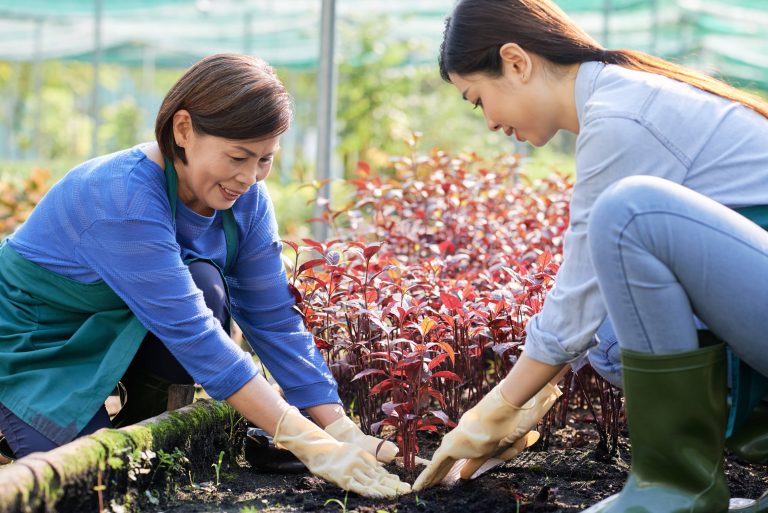
When it comes to outdoor gardening and landscaping, few activities are as rewarding as pruning. This essential task not only enhances the beauty and structure of your trees and shrubs but also plays a crucial role in maintaining their overall health. Proper pruning can transform a tangled mass of branches into a neat form, encouraging new growth and maximizing the plant’s aesthetic appeal. This blog post will guide you through the importance of pruning, the best times to prune, tools needed, and techniques to ensure optimal health and beauty of your plants.
Understanding the Importance of Pruning
Pruning is not merely cutting branches; it is a strategic process that shapes the growth of plants. By selectively removing parts of the plant, you ensure light and air penetrate the canopy, reducing the risk of disease and promoting vigorous growth. Additionally, pruning helps:
1. Remove Dead or Diseased Wood: Diseased or damaged branches can become entry points for pathogens. Removing them prevents the spread of disease and keeps the plant healthy.
2. Encourage Fruit and Flower Production: Regular pruning stimulates the growth of spurs, the branches that bear flowers and fruit. This not only enhances the plant’s fruiting and flowering capacity but also improves the quality of the yield.
3. Maintain Desired Shapes and Sizes: Pruning helps maintain the structure and aesthetic shape of plants, ensuring they fit well within the landscape design. It helps control the size of the plant to prevent overgrowth that might interfere with other garden elements.
4. Enhance Plant Vigour: By removing crossing branches or thinning out dense crowns, you improve the plant’s ability to absorb sunlight, thus boosting its vigor and growth potential.
When to Prune: Timing is Key
Different plants and shrubs have different pruning schedules. It is crucial to prune at the right time to avoid stunting growth or causing stress to the plant. Here are some general guidelines:
1. Deciduous Trees and Shrubs: The best time to prune most deciduous plants is during their dormant season, which is late winter or early spring, just before new growth starts. This timing allows for easy shaping and reduces the risk of exposing fresh cuts to pests and diseases.
2. Evergreens: Evergreens can generally be pruned in late winter, before the growth begins. However, slight shaping or cutting back can be performed in early summer.
3. Spring-Flowering Shrubs: These should be pruned right after they finish blooming. Pruning them too late in the season can remove next year’s flower buds.
4. Summer-Flowering Trees and Shrubs: Prune these in late winter or early spring before they start to grow. They bloom on the current season’s growth.
Essential Tools for Successful Pruning
Having the right tools at your disposal is fundamental to executing a proper prune. Here are the essentials:
1. Pruning Shears: Perfect for smaller branches, up to ¾ inch in diameter. They are the most versatile tool in a gardener’s shed.
2. Loppers: Ideal for medium-sized branches, up to 2 inches in diameter. They have long handles for better leverage.
3. Pruning Saws: Designed for larger branches over 2 inches. They come in different shapes and designs suited for specific tasks.
4. Hedge Shears: Best for shaping hedges, but not suitable for precise cuts on individual branches.
5. Pole Pruners: Allow you to reach higher branches without the need for a ladder.
Techniques for Effective Pruning
Each cut you make has a specific purpose, and knowing the right technique is essential for effective pruning:
1. Thinning: This involves removing entire branches back to the main stem or trunk. It opens up the plant, allowing better air flow and light penetration, which is crucial for its health.
2. Heading Back: Trimming the end of the branch to a bud or lateral branch. This encourages bushier growth, improving the plant’s density and compactness.
3. Shearing: This is used primarily for hedges to create specific shapes, giving them a tidy appearance. It is less about the plant’s health and more about aesthetics.
4. Crown Raising: Removing lower branches. This is often done on larger trees to create a clear trunk.
5. Crown Reduction: Reducing the size of a tree’s canopy for safety or aesthetics without compromising the overall health of the tree.
Pitfalls to Avoid
1. Over-pruning: Removing too much at one time can stress the plant. It’s crucial to prune gradually, never removing more than 25% of the foliage at once.
2. Improper Cuts: Avoid leaving stubs or making flush cuts against the tree trunk. Aim for clean cuts just above a bud or branching point.
3. Using the Wrong Tools: Ensure your tools are sharp and appropriate for the job at hand to avoid injury to the plant and achieve clean cuts.
Conclusion
Pruning is an art and science that can dramatically improve the health and appearance of your outdoor space. By understanding the needs of each plant, using the right tools, and applying the correct techniques, you can ensure that your trees and shrubs remain vigorous and add aesthetic value to your garden throughout the seasons. Remember, each cut is a step towards a healthier and more beautiful landscape. Happy pruning!













